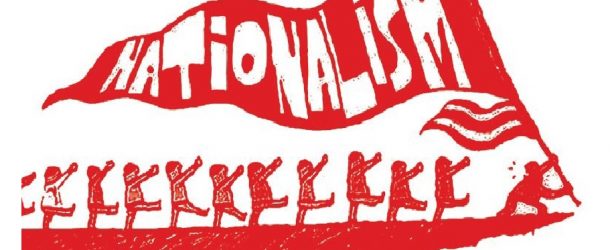The main theoretical discussions concerning nationalism highlight that nationalism is not just an ideology. It can be seen as an ideology, theory, and also as an approach. Indeed, there is no general or single school of thought to explain the social phenomena of nations, nationhood, and nationalism.
A nation can be seen as a particular way of thinking of what it means to be a people, and how this definition of people might fit into a broader world system (Calhoun, 1997: 99). According to Özkırımlı, “nationalism is a particular way of seeing and interpreting the world, a frame of reference that helps us make sense of and structure the reality that surrounds us” (Özkırımlı, 2005: 9). Nationalism can be treated as an ideology produced by the resentment of new elites against older elites or opposing countries. Elites can find challenges and threats which mobilize national sentiments and feelings. In this regard, it can be said that nationalism also gives human beings a sense of belonging, offers rescue from alienation (Greenfeld, 1992: 487-488).
Some scholars define nations within the framework of subjectivist terms. For instance, for Connor (1972: 337) “the essence of the nation is not tangible. It is psychological, a matter of attitude rather than of fact.” Connor introduces one feature which, according to him, characterizes all nations and constitutes the intangible essence of nationality: the belief in common descent. Connor stresses that the psychological bond which brings co-nationals together is based on their common conviction that they are ethnically related (Connor, 1978: 377–389). Moreover, Ernest Renan, a famous French patriot and an important theorist of nationalism, states that nationalism is a solidarity sustained by a distinctive historical consciousness. The nation for Renan is a daily plebiscite.
Categorizing different types of nationalisms has long been a scholarly endeavor. Meinecke’s work titled Cosmopolitan and the National State was one of the earliest attempts in this direction. Meinecke ([1907] 1970) divided nations into distinct groups as political nations (Staatsnationen) and cultural nations (Kulturnationen). In line with this, Kohn (1944) was among the first to elaborate on the distinction between Western and Eastern forms of nationalism. The binary distinction Kohn developed proved to be influential in nationalism studies. In France, England, and America, according to Kohn, the nation was regarded as a rational association of common laws; by contrast, an authoritarian nationalism in Central and Eastern Europe emerged.
The ethnic form of nationalism is based on descent, race and kinship. In addition, vernacular culture, especially customs and language are key elements of an ethnic nation (Smith, 1991: 12). This form of nationalism is referred to as the German model and is defined by ancestry, not by boundaries of a state. It is a community of birth and native culture where common descent is heavily emphasized. On contrary, in the Western or civic model of nationalism, national unity arises from a historic territory, institutions, and laws and the legal-political equality of members which is underpinned by a set of rights and duties. Smith (1991) argues that every type of nationalism contains civic and ethnic elements in varying degrees and different forms. The contrast in ethnic to civic nationalism is heavily influenced by that of Germany to France. Rogers Brubaker (1992) compared the histories of nationalism in France and Germany as expressions of different principles, the law of the soil versus the law of the blood.
One of the biggest issues in nationalism literature is the divide between ‘constructivists’ or ‘modernists’ and ‘primordialists’. Geertz is often considered to be the scholar who introduced the primordial sentiments concept of an individual to the world. According to Geertz (1963), primordial attachments stem from the ‘givens’. Primordial attachments are natural rather than sociological. Primordialism is not a single theory, but rather an umbrella term which consists of a number of theories. Modernism is not a homogenous tradition either. The common denominator in modernist theories is that, unlike primordialists they assert that nations are modern phenomena. The modernists emphasize the historical and sociological processes by which nations are created. The modernist scholars see nationalism rooted in industrialization (Gellner, 1983), the rise of communications media (Anderson, 1983), the development of the modern bureaucratic state (Breuilly, 1982) and regard it as an invention (Hobsbawm, 1990).
Karl Deutsch (1966) a prominent figure working on the relationship between communication and nationalism argues that the objective of nationalist organizations is to strengthen and extend the channels of communication which can ensure a popular compliance with national symbols. The nation-state in Deutsch’s understanding plays no role in shaping communicative spaces.
Benedict Anderson another scholar who sees the roots of nationalism in the genres of collective imagination and rise of communication describes nations as “imagined political communities, because the members of even the smallest nation will never know most of their fellow members, meet them, or even hear them, yet in minds of each lives the image of their communion” (Anderson, 1991: 6).
In a similar vein, for the Marxist historian Hobsbawm, nations constitute “dual phenomena, constructed essentially from above, but which cannot be understood unless also analyzed from below, that is in terms of the assumptions, hopes, needs, longings and interests of ordinary people, which are not necessarily national and still less nationalist” (Hobsbawm, 1990: 10). Hobsbawm highlights the role of political transformations in understanding nationalism and goes as far as suggesting it is an invented phenomenon. In addition, he argues that the nation and its associated phenomena are the most pervasive of invented traditions. Hobsbawm and Ranger (1983) have examined a number of examples in which national traditions have been ‘invented’ by state-building elites. For Hobsbawm nations and nationalism are products of social engineering.
In parallel to the modernist understandings of nationalism, nation can also be viewed as a discursive construction. The discursive construction of social groups has to be seen as a macro-strategy to create sameness and difference. Hence, the explicit analysis of positive self-presentation and negative other-presentation constitutes the initial step when investigating discourses of nationalism (Wodak, 2006: 105). According to this standpoint, the idea of a national community becomes reality in the realm of beliefs through reifying, figurative discourses performed by political elites and intellectuals and journalists and; is disseminated through the education, communication, militarization as well as through sports meetings (ibid).
On the other hand, Michael Billig (1995) challenges the orthodox conceptualizations of nationalism which tend to focus only on its extreme manifestations and project it on to others. Billig introduces the term ‘banal nationalism’ to cover beliefs, ideological habits, representations and unnoticed, routine practices which make the daily reproduction of nations in the West possible. These practices are not removed from everyday life, as some observers have previously suggested. Daily, the concept of nation is indicated or ‘flagged’, in the lives of its citizens.
As concluding remarks, it can be stated that, nationalism is not just an ideology, it is a phenomenon used while explaning the rise of nation-states:how they emerged, what kind of processes dominated etc. Nationalism is also a theory shaping the behavior of the states and the people as a whole. It is also an approach which helps us understand the character of state-building process.
Begüm BURAK
REFERENCES
- Anderson, Benedict (1991 [1983]). Imagined Communities: Reflections on the Origin and Spread of Nationalism. (Revised Ed.). London and New York: Verso.
- Billig, Michael (1995). Banal Nationalism. London: Sage Publications.
- Brubaker, Rogers (1992). Citizenship and nationhood in France and Germany. Cambridge: Harvard University Press.
- Breuilly, John (1982). Nationalism and the State. New York: St. Martin’s Press.
- Calhoun, Craig (1997). Nationalism. Buckingham: Open University Press.
- Connor, Walker (1972). “Nation-building or nation-destroying?”. World Politics. Vol. 24. no: 3. pp. 319-355.
- Connor, Walker (1978). “A nation is a nation, is a state, is an ethnic group is a….”. Ethnic and racial studies. Vol. 1. no: 4. pp. 377-400.
- Deutsch, Karl W. (1966). Nationalism and Social Communication: An Inquiry into the Foundations of Nationality. Cambridge, MS: MIT Press.
- Gellner, Ernest (1983). Nations and Nationalism. Ithaca: Cornell University Press.
- Greenfeld, Liah (1992). Nationalism Five Roads to Modernity. Cambridge: Harvard University Press.
- Hobsbawm, Eric (1990). Nations and nationalism since 1780: programme, myth, reality. Cambridge: Cambridge University Press.
- Kohn, Hans (1944). The Idea of Nationalism: A Study in Its Origins and Background. New York: Macmillan.
- Meinecke, Friedrich (1970) [1907]. Cosmopolitanism and the National State. Princeton: Princeton University Press.
- Özkırımlı, Umut (2005). Contemporary debates on nationalism: A critical engagement. Basingstoke: Palgrave Macmillan.
- Ranger, Terence & Hobsbawm, Eric (edt.). (1983). The invention of tradition. Cambridge: Cambridge University Press.
- Smith, Anthony D. (1991). National Identity. Reno: University of Nevada Press.
- Wodak, Ruth (2006). “Discourse Analytic and Socio-linguistic Approaches to the Study of Nation(alism)”. in Delanty, Gerard & Kumar, Krishan (eds.). The Sage Handbook of Nations and Nationalism. London: Sage. pp. 104-117.
























































